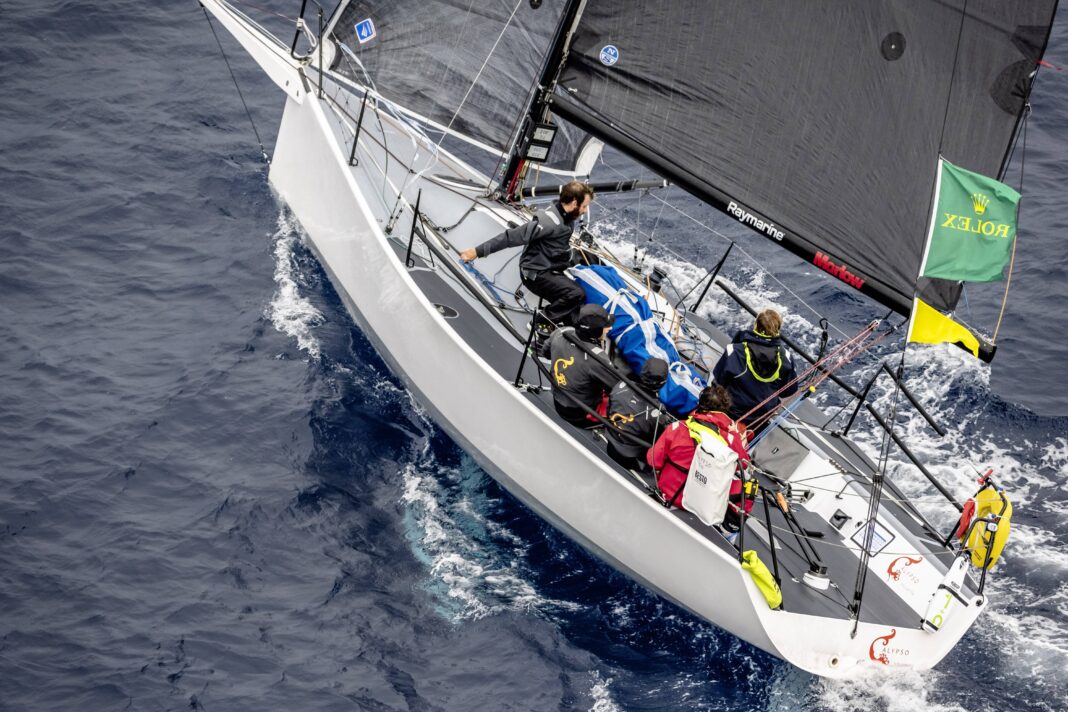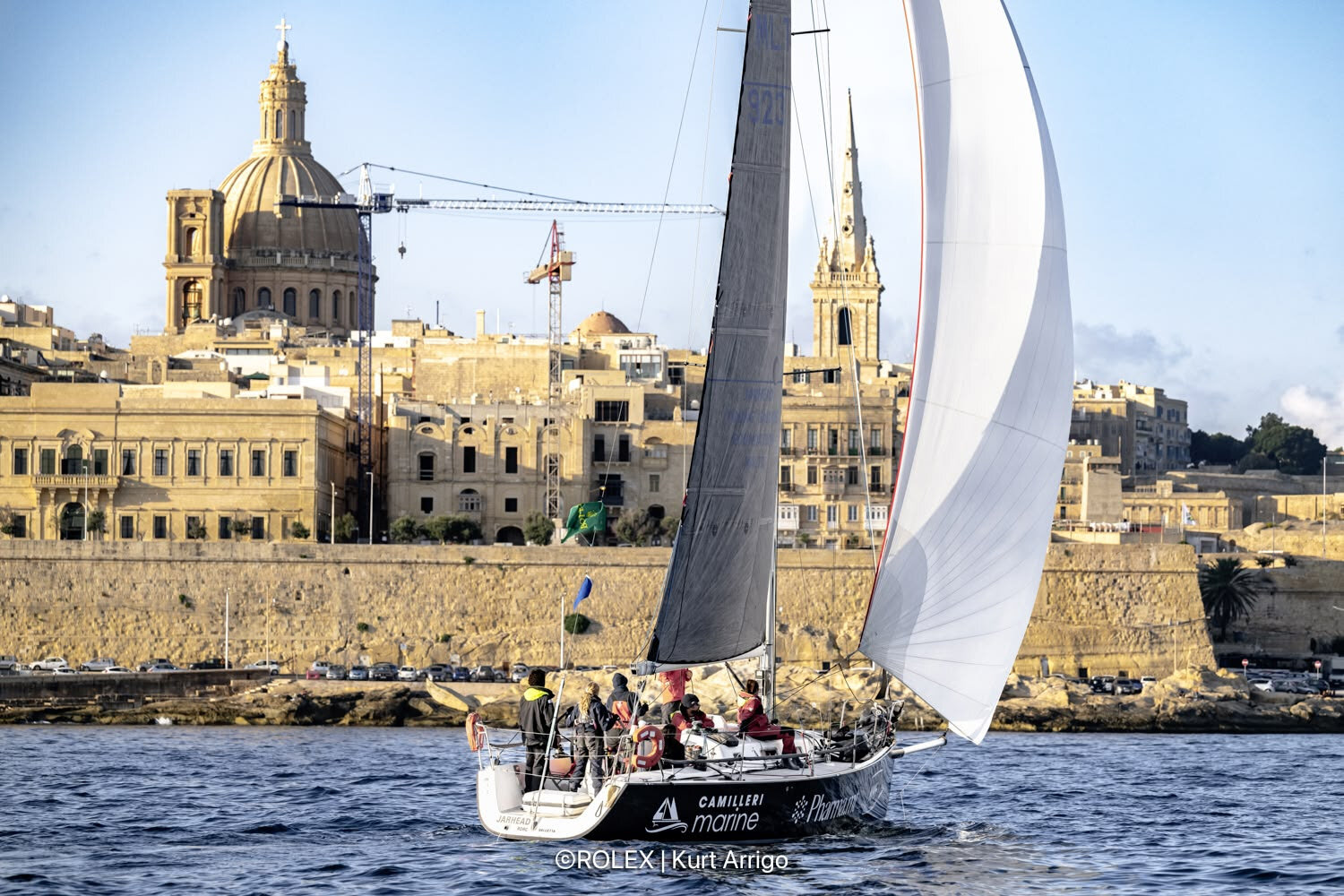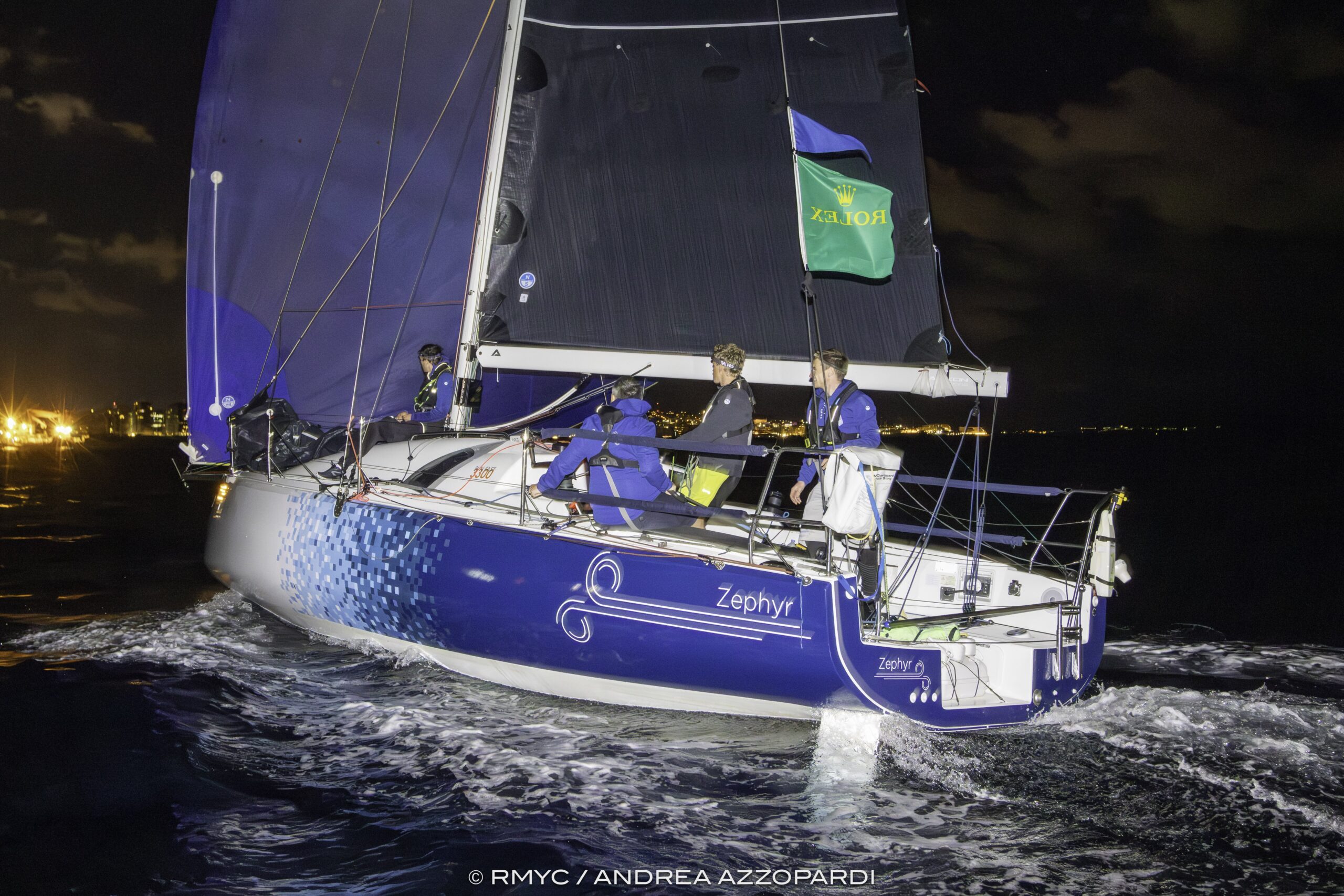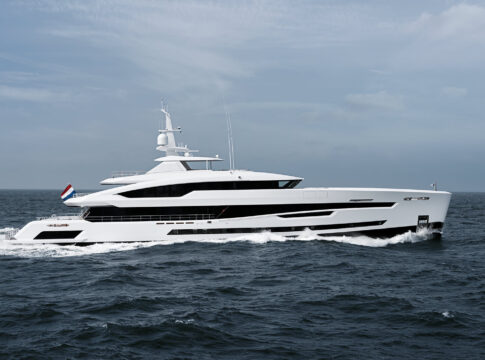As the 45th Rolex Middle Sea Race heads into its final hours, only two yachts remain on the course. Both are expected to finish ahead of the final prize giving, scheduled for noon on Saturday at the historic, former Sacra Infermeria in Valletta.
Overnight and throughout the day, yachts have continued to complete the course bringing the number of finishers so far to 75, from an original start number of 112.
Classes 5 and 6 comprising the smallest and slowest yachts, together with the double handed class, were the last to fill their podiums decided by IRC time correction. In IRC 5, the Farr 30 Calypso had already posted an unbeatable time on Thursday.
Joining the Maltese crew on the podium are Bedouin from Australia and another local crew, Stefan Debattista’s Geisha. The victors in IRC 6 were Simon Toms and Zephyr, the British Sun Fast 3300, which finished just after midnight today. The second and third rungs on the class leaderboard were filled by the Maltese Swan 47 Lazy Duck, sailed double handed with John and Tommy Ripard, and El Oro, the Australian Whitbread cruiser built in 1974.
Sebastian Ripard and Daniel Calascione were the co-skippers of Calypso. Their assault on this year’s Rolex Middle Sea Race deftly captured the pioneering spirit of Ripard’s grandfather John, one of the group of sailors that founded the race in 1968.
Having first raced in 2002 on the J/109 Market Wizard with his father John Jr, Ripard’s relationship with the race is symbiotic. Just as the race has developed over the past two decades so too have his seamanship skills. The same can be said of Calascione, whose first race was in 2003 with his father.
“We had a great race,” said Ripard. ”There was bit of anticipation on what to expect from such a small, 30 foot boat, but we had a really great race, and cannot believe that we made it work. We knew that we were sailing almost a dinghy, and wondered how we would handle it, particularly the squall on the first day. We are surprised at how well that went and had growing confidence in the boat from a seamanship aspect.”
It is hard to imagine how exposed the crew actually were without visiting the boat. The deck space is limited, the freeboard low, the companionway tight and the space below constrained.
Comforts, such as they were, included pipe cots, a boiling stove for warm freeze-dried food and an uninviting, small head (loo). Personal kit was restricted by volume rather than weight. “Not even half the crew can be down below on this boat at one time. There’s only a square metre of space or so to do all the stuff that you need to do,” advised Ripard. “You’re touching both sides of the hulls when you’re changing to your oilies. Your head on one side, your feet on the other.”
Once racing, the experience is even harder to imagine. “On deck it was OK,” said Ripard. “Down below, it just felt like complete havoc especially the first night. That’s when we were thinking, how are we going to handle four days of this, how we’re going to cook in this, how we’re going to keep things remotely dry and survive.”
“Nothing stayed dry,” he continued. “We just got used to that. It’s incredible what the human body can get used to. Something that you think is impossible, if you do it enough, you get used to it, and you find out how to make it work.”
It was not all bad. “The downwind segments were incredible,” enthused Ripard. “Even the first night, when we got hit by the squall, which went from 20 to 40 or 50 knots. We had the code zero up. Somehow, we managed to put that away, without breaking the mast or the boat, and then we were just running with the storm doing 20/25 knots with just the main up. Because she’s quite light and goes quite fast, she unloads in those situations, so nothing feels too strained. You are on the edge, but you also feel comfortable at the same time.”
Possibly the worst moment of the race was approaching San Vito lo Capo. “When we saw the forecast, which was 300 miles of on the nose, then we really thought, why are we doing this?” said Ripard.
Thankfully there were good moments and for a while it looked like it could be Calypso’s race in the overall IRC contest. The effect on the crew was vital. “This was just uplifting to morale, and exciting,” remarked Ripard. “It kept everyone willing to go through all of the crap, when everything was wet down below and swimming around. It helps you put up with that stuff.”
Overall, the sense of achievement was high. “It is the first time that it’s my own boat,” offered Ripard. “The first time that we had to do so much work to get the boat seaworthy. I had a lot on my conscience about whether everything was going to hold up. From that point of view, it feels really rewarding.”
For Calascione the experience was life affirming. “All in all, there was a real fulfilment in preparing and doing the race in a boat like that successfully,” he said. “Seb and I do quite a lot of things together, and one of the ways we keep connected is by sailing together.
Seb was the one who did all the convincing to buy the boat, but he’s very convincing and I’m good at saying yes to things that I might not want to do in the moment, but know that eventually they’ll pay off.” Once on board with the project, Calascione was 100% behind it, although living off Malta meant he was not as engaged in the preparation as perhaps he would have liked.
“I think the ultimate aim was to find a boat that could be competitive, but is also a real adventure,” he continued. “We were seeking that shared experience between us and between friends that is something that you can remember for life. Not just the usual thing, but something with a little bit more of an edge. And this boat gave both things.”
Sam Matson, the navigator on IRC 6 winner Zephyr had also enjoyed a shared experience, with an enthusiastic, skilled crew on a small boat. He was extremely happy at completing the course. Speaking in the dock immediately after crossing the finish, he had this to say: “The result is not confirmed yet, but we’re hoping we’ve got first in class.
We worked pretty hard for it and felt you needed to win that race about 10 times over given the number of restarts. Every time we restarted, we did get ourselves in a good place and back out in front. So, we’re pretty happy with how we performed and kept ourselves out in front when we needed to.”
Matson’s focus in the early part of the race was getting the strategy right for the Strait of Messina, and the approach delivered dividends. “For me, the leg to Messina was key,” he explained. “It paid in the first night, just having a really clear strategy through that first thunder cell.
We came out fighting and getting to the place we wanted to go. We were not surviving through it, but actually aiming to where we needed to be. Coming out of where you wanted to end up, meant we could attack the rest of the leg, when the conditions got better.”
Once past Stromboli, it was a question of hanging on in the tricky, light conditions across the top of Sicily. Then around Favignana, Zephyr faced the tough upwind slog to the southernmost point on the course and then on to the finish. “It always feels like quite a long haul from Lampedusa, in especially in those conditions,” explained Matson.
“There’s not a lot going on for 90% of that leg, until you finally get up towards the South Comino Channel. After that, all you focus on is getting down to finish and not losing anything to the guys behind. You’ve just got to keep pushing right until the very end.”
In terms of secrets to doing well, Matson pointed to the pre-race work, like so many other crews. “Preparation is always key,” he said. “For me, a lot of preparation is mental. The last thing you want to do is come down the day before and be ripping things apart, trying to fix problems. We went out for a little sail on Thursday and were pretty happy.
We didn’t want to touch anything after that point. The sooner you can get into your mind that the boat itself is prepared, then you can just focus entirely on yourself and make sure you ready. And you know what you want to do. If you’ve got a really clear plan for the first 24 hours, you’re going to feel well prepared.”
In terms of crew work, Matson takes the view that extensive training together is not so critical, especially all on board have offshore experience as was the case with the four crew on Zephyr.
“As long as you are clear from the very beginning how you’re going to work together, and talk about roles on board, talk about how you even want to live on board together, then ultimately, I think everyone will fall in place,” he explained. “Once you are out there, you will be pretty comfortable, and know how to move around each other and work well together.”
Open communication the whole time is important especially when everyone is starting to tire towards the finish. “The last thing you do is start to go quiet,” he said. “If you go quiet, everyone will start to get more and more tired. They’ll fall inside themselves.
They’ll forget what they’re trying to achieve. To pick everyone up, you got to keep communicating. You got to keep the game plan in mind. Don’t concentrate on the dock and the reception afterwards, keep pushing on to the next mark and keep pushing on the strategy.”
At 19:00 CEST, the last two boats at sea are Stefan Hümmeke’s Pogo36 Infinity from Germany and the Austrian Dufour 460 Almar skippered by Thomas Murlasits and Daniel Ziehmayer, which should have completed the course by 10 p.m. this evening.
The final prize giving tomorrow, on Saturday 26 October, will bring to a close the 2024 Rolex Middle Sea Race. While the remaining crews will start to head home on Sunday, the Royal Malta Yacht Club’s thoughts will be turning to next year and the 46th edition. The club values the shared experience as much as the crews, and knows only too well that preparation is key to a successful race.







